I’m thrilled to share my journey with ADM Flooring, a product that’s transformed my home and deserves your attention. If you’re hunting for flooring that balances style, durability, and affordability, ADM is a standout choice.
Its realistic wood textures, easy installation, and robust performance make it a game-changer for any space. Whether you’re renovating a cozy apartment or a sprawling house, ADM Flooring offers a practical yet beautiful solution.
Let’s explore my experience, the pros and cons, maintenance tips, and how it stacks up against other brands to help you decide.
My Journey With ADM Flooring
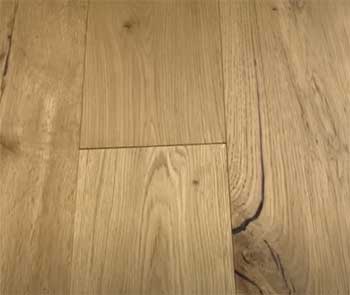
When I decided to renovate my home last year, I was overwhelmed by the sheer number of flooring options out there.
Hardwood felt too pricey, and I wasn’t sold on the look of basic laminate.
Then I stumbled across ADM Flooring at a local retailer, and let me tell you, it was love at first sight.
The display showcased planks with rich, natural wood grains that looked like they belonged in a high-end cabin, not my modest suburban home.
I chose their Rustic Oak finish for my living room and kitchen, and the transformation was jaw-dropping.
Installing ADM Flooring was a breeze, even for someone like me who’s more comfortable with a paintbrush than a power tool. The click-lock system snapped together like a dream, and I had my 600-square-foot space done over a weekend with a friend’s help.
What struck me most was how substantial the planks felt—12mm thick with a sturdy core that didn’t flex or creak underfoot. I’ve got two rambunctious dogs and a toddler who treats the floor like a racetrack, so durability was non-negotiable.
After six months, I noticed a few scratches from dropped toys, but nothing a quick buff couldn’t handle.
The waterproof claim was put to the test when my dog knocked over a water bowl, leaving a puddle for hours. I braced for disaster, but the floor held up without warping or bubbling. Cleaning is a cinch—just a damp mop and some mild soap, and it’s good as new.
My only gripe?
The finish can look streaky if you overdo the water, so I learned to wring out the mop thoroughly. Overall, ADM Flooring has made my home feel polished and inviting, and I’m excited to break down why it’s worth considering for yours.
The Upsides of Choosing ADM Flooring

- Durability That Handles Real Life
ADM Flooring is built like a tank, and I mean that in the best way. Its high-density fiberboard core and AC4 rating mean it can take a beating from heavy foot traffic, pets, and the occasional dropped dumbbell.
I’ve seen my floors endure everything from muddy paws to spilled juice, and they still look fantastic. The wear layer is designed to resist scratches and scuffs, which is a lifesaver in a busy household like mine.
After a year, the only signs of wear are minor surface scratches that blend into the wood grain, giving it a lived-in charm.
- Stunning Visual Appeal
Let’s talk looks—you’d swear ADM Flooring is real hardwood at first glance. The high-definition printing and embossed textures mimic natural wood so well that guests have asked me where I sourced my “fancy oak.”
The range of finishes, from warm hickories to cool ash tones, lets you tailor the vibe to your space. My Rustic Oak has a hand-scraped look that adds character without feeling overdone. It’s the kind of floor that makes your home Instagram-worthy without breaking the bank.
- Easy Installation for DIY Enthusiasts
If you’re handy with basic tools, ADM Flooring is your friend. The click-lock system is intuitive, requiring no glue or nails, which saved me a ton on installation costs. I laid 600 square feet in two days, and the only sore spot was my knees from crawling around.
The planks fit together snugly, creating a seamless surface that doesn’t gap or shift. Even if you hire a pro, the straightforward design keeps labor costs low, making it a win for your wallet.
- Waterproof Features for Peace of Mind
Spills happen, especially with kids and pets. ADM’s WetGuard technology is a game-changer, offering full waterproofing from surface to subfloor. I’ve tested this claim unintentionally—think spilled coffee and forgotten water bowls—and the floor didn’t flinch.
No warping, no swelling, just a quick wipe and it’s good as new. This makes ADM ideal for kitchens, bathrooms, or any space where moisture might sneak in. It’s not just water-resistant; it’s built to handle life’s messiest moments.
- Affordable Luxury
You don’t need to sell a kidney to afford ADM Flooring. Priced between $2.50 and $4 per square foot, it’s a steal compared to hardwood, which can run $10 or more per square foot.
I spent about $1,800 on materials for my living room and kitchen, a fraction of what hardwood would’ve cost. The quality doesn’t scream “budget,” though—the realistic visuals and sturdy build make it feel like a premium product without the premium price tag.
The Downsides of ADM Flooring You Should Know About

- Limited Warranty Specifics
ADM Flooring comes with a solid warranty, but you need to read the fine print. The lifetime residential warranty covers wear and water damage, but it’s void if you don’t follow installation guidelines to the letter.
For example, my cousin installed ADM in a sunroom without climate control, and when the planks warped, the warranty didn’t cover it. Make sure your space is climate-controlled, and double-check the acclimation process—48 hours in the room before installation—to avoid headaches.
- Susceptibility to Scratches
While ADM is tough, it’s not invincible. My toddler’s toy cars and my dog’s enthusiastic digging have left faint scratches. They’re not dealbreakers, but if you’re expecting a completely scratch-proof surface, you might be disappointed.
Heavy furniture can also leave marks if you drag it without felt pads. I’ve learned to be proactive with rugs and furniture protectors, but it’s something to keep in mind if your home sees a lot of action.
- Potential for Streaking During Cleaning
Cleaning ADM Flooring is generally easy, but I’ve noticed that using too much water or the wrong cleaner can leave streaks. The first time I mopped with a generic floor cleaner, the finish looked dull and splotchy.
Switching to a manufacturer-recommended cleaner and a barely damp mop fixed the issue, but it’s an extra step to consider. If you’re not meticulous about cleaning, the floor might not always look its best.
- Limited Style Variety Compared to Competitors
ADM offers a decent range of finishes, but it’s not as extensive as some competitors. If you’re after niche looks like ultra-wide planks or exotic wood grains, you might find the selection a bit limiting.
I was thrilled with my Rustic Oak, but my neighbor wanted a bold, dark walnut and ended up going with another brand for more options. It’s worth checking ADM’s catalog to ensure your dream aesthetic is covered.
Keeping Your ADM Flooring Looking Pristine
- Regular Sweeping and Dusting
To keep your ADM Flooring gleaming, make sweeping or dusting a daily habit. I use a soft-bristle broom or a dry microfiber mop to catch dust, pet hair, and crumbs before they get ground into the surface.
My robot vacuum has been a lifesaver for quick cleanups, especially in high-traffic areas like the living room. This simple step prevents tiny particles from scratching the finish, keeping your floor looking fresh for years.
- Damp Mopping with Care
When it’s time for a deeper clean, a damp mop is your best friend—but go easy on the water. I learned the hard way that a sopping wet mop can leave streaks or even seep into seams if you’re not careful.
Wring out the mop until it’s barely damp, and use a cleaner specifically designed for laminate or vinyl flooring. I mix a capful of ADM’s recommended cleaner with a gallon of water, and it works like a charm. Mop in the direction of the grain for a streak-free shine.
- Handling Spills Immediately
Spills are no big deal with ADM’s waterproofing, but don’t let them sit. I’ve had coffee, juice, and even paint splatter on my floor, and a quick wipe with a damp cloth took care of it.
For sticky messes, like syrup from a pancake mishap, I use a slightly damp sponge with a drop of dish soap, followed by a dry cloth to prevent water spots. Acting fast keeps your floor free of stains and maintains its glossy finish.
- Protecting Against Scratches
To minimize scratches, I’ve got a few tricks up my sleeve. Felt pads under furniture legs are a must—trust me, dragging a chair without them is asking for trouble.
I also use area rugs in high-traffic zones, like near the front door, to catch dirt and grit. If your pets are prone to digging, keep their nails trimmed to avoid surface damage. For minor scratches, a touch-up kit from ADM can work wonders, blending imperfections seamlessly.
- Avoiding Harsh Chemicals
Steer clear of abrasive cleaners or anything with ammonia, bleach, or wax. I made the mistake of using a vinegar-based cleaner early on, and it dulled the finish.
Stick to pH-neutral cleaners designed for laminate or vinyl, and avoid steam mops unless the manufacturer explicitly says they’re safe. My go-to is ADM’s own cleaning solution, which keeps the floor shiny without risking damage.
How ADM Flooring Stacks Up Against The Competition?
- Hewn Flooring: Artisan Appeal with a Higher Price Tag
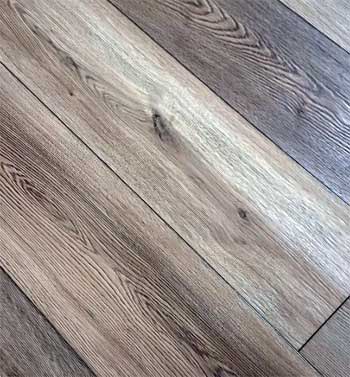
Hewn Flooring caught my eye with its artisan-inspired designs, boasting hand-crafted textures that feel like they belong in a boutique showroom.
Their planks, often 8 inches wide, create a bold, rustic look that’s perfect if you want a statement floor.
However, Hewn’s engineered hardwood is pricier, ranging from $6 to $10 per square foot, compared to ADM’s $2.50 to $4.
Installation is trickier, too, often requiring professional help due to the glue-down or nail-down methods.
While Hewn’s durability is top-notch, it’s not fully waterproof, so spills in kitchens or bathrooms could spell trouble. ADM’s click-lock system and WetGuard technology make it more forgiving for DIYers and moisture-prone spaces, but Hewn’s unique aesthetic might sway you if budget isn’t a concern.
- Mohawk SolidTech Plus: Premium Vinyl with a Stiff Feel
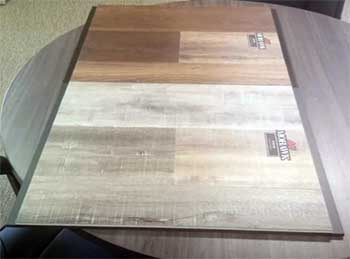
Mohawk SolidTech Plus is a luxury vinyl plank that competes closely with ADM, especially in durability.
Its rigid core and 20-mil wear layer make it a beast against scratches and dents, and it’s 100% waterproof, perfect for basements or laundry rooms.
Priced at $4 to $6 per square foot, it’s a step up from ADM but offers more color options, including trendy grays and blondes.
I found SolidTech’s planks stiffer and less forgiving during installation, which can be a hassle for uneven subfloors.
ADM feels softer underfoot and easier to install, but SolidTech’s thicker wear layer might appeal if you prioritize longevity over comfort.
- Pergo Outlast Flooring: Affordable but Mixed Reliability
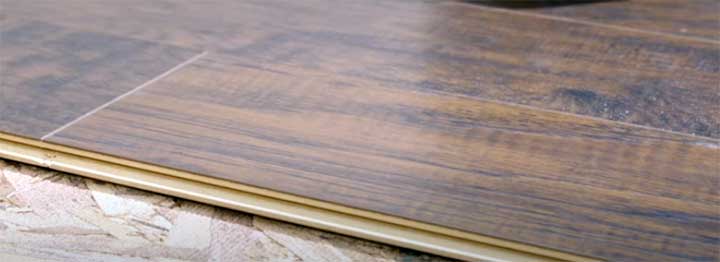
Pergo Outlast, exclusive to Home Depot, is a laminate flooring with SpillProtect technology, priced between $2.80 and $3.20 per square foot. It’s a close cousin to ADM in cost and waterproofing, but customer feedback is a mixed bag.
Some rave about its durability, while others, like a friend who installed it in her condo, dealt with seam separation within months. Outlast’s 10mm thickness feels less substantial than ADM’s 12mm, and the locking system can be finicky, making installation a chore.
ADM’s sturdier build and easier click-lock system give it an edge for hassle-free setup and consistent performance.
- Pergo TimberCraft Flooring: Stylish but Store-Exclusive
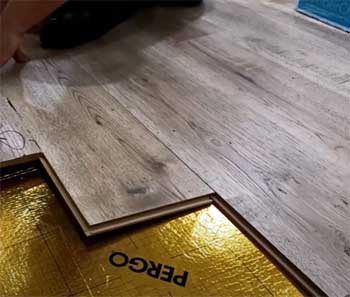
Pergo TimberCraft, available only at Lowe’s, is another laminate option with WetProtect technology, mirroring ADM’s waterproofing.
Priced at $3 to $4 per square foot, it’s comparable in cost, and its UltraDef technology creates hyper-realistic wood visuals.
I admired TimberCraft’s thicker 12mm planks, but its store exclusivity limits availability, and some users report chipping during installation.
ADM’s broader distribution and similar durability make it more accessible, though TimberCraft’s wider range of finishes might tempt you if you’re near a Lowe’s and want more style options.
Frequently Asked Questions About Flooring
Picking the “best” flooring brand depends on your needs, but I’d put ADM Flooring near the top for its balance of affordability, durability, and style. Its waterproof WetGuard technology and easy click-lock installation make it versatile for most homes. Mohawk’s RevWood and Pergo’s Outlast and TimberCraft are strong contenders, especially for specific aesthetics or budgets, but ADM’s consistent performance and reasonable price point make it a reliable choice for anyone wanting a hardwood look without the hardwood hassle.
Engineered wood, like Hewn Flooring, has a stunning real-wood veneer, but it’s not perfect. It’s pricier than laminate or vinyl, often costing $6 to $10 per square foot, and installation can be complex, requiring glue or nails. It’s not fully waterproof, so spills in kitchens or bathrooms can cause warping. The veneer can only be refinished a few times, limiting its lifespan compared to solid hardwood. Lastly, extreme humidity or temperature swings can cause planks to expand or contract, leading to gaps or buckling if not properly acclimated.
For manufactured wood, I’d lean toward ADM Flooring for its durability, waterproofing, and ease of installation. Its 12mm-thick planks and AC4 rating handle heavy traffic, and the WetGuard technology ensures spills won’t ruin it. Mohawk’s SolidTech Plus is a close second, with a thicker wear layer and more style options, but it’s pricier and stiffer. Pergo’s TimberCraft is solid for aesthetics, but ADM’s accessibility and performance make it a top pick for most households looking for a hardwood-like experience.
Engineered wood flooring, like Hewn’s offerings, typically lasts 20 to 40 years with proper care. The lifespan depends on the veneer thickness—thicker veneers (2-3mm) can be sanded and refinished a couple of times, extending life. High-traffic areas or homes with pets might see wear sooner, especially if not maintained. Humidity control is key; excessive moisture can warp planks, cutting longevity. Regular cleaning and protective measures, like rugs and furniture pads, can keep engineered wood looking great for decades.
Why ADM Flooring Is The Smart Choice For You?
After living with ADM Flooring, I’m convinced it’s a top-tier choice for anyone wanting beauty, durability, and value. Its waterproof design, easy installation, and realistic wood aesthetics make it a no-brainer for busy homes.
From surviving my toddler’s spills to adding warmth to my space, ADM has exceeded my expectations. Whether you’re a DIY newbie or a seasoned renovator, this flooring delivers.
Check it out at your local retailer and see why it’s the perfect fit for your home.
